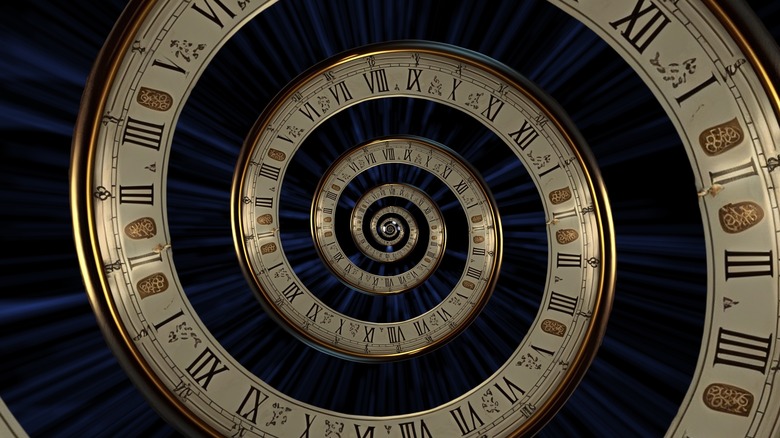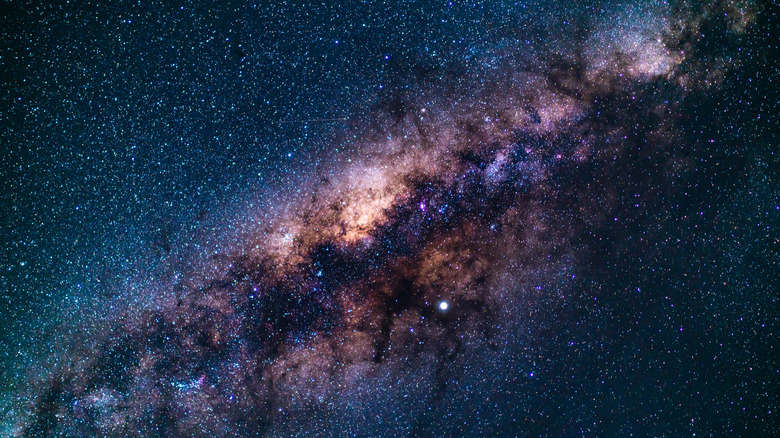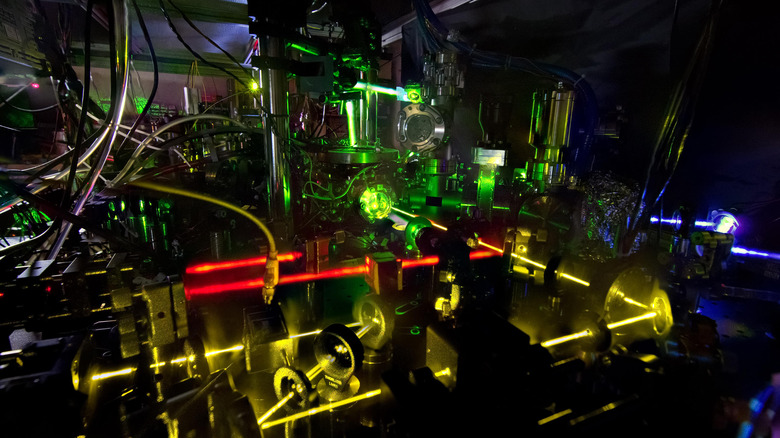The Nuclear Clock That Only Loses 1 Second Every 300 Billion Years
Whether or not folks realize it, we most certainly live in a time-enslaved age. Got a meeting in ... 22 minutes? That's totally enough time to grab the leftovers from the fridge, chuck them in the microwave, wolf them down, and clean up with, like, three minutes to spare, right? Compare this to eras of yore — "So, see you tomorrow afternoon?" — before mechanical clocks started hitting churches and town squares in 13th-century Europe. As Scientific American tells us, clergymen could keep track of all those pesky prayer duties better, especially when clocks got bells installed in them. And yes, people have always needed to keep track of time — from Egyptian sundial-like obelisks to Greek clepsydras that fill with water, candle clocks to hourglasses, and more. But now? You can live 300 billion years and not lose a second. Yes: Billion — not even million.
In February 2022, some clever people at the physics department at the University of Wisconsin-Madison developed the most accurate clock in the history of ever. Their ultra-fastidious creation — described in the journal Nature as a "'multiplexed' one-dimensional optical lattice clock" — is not designed to outlive humanity by untold magnitudes of time or help you know when your hot pocket is done. As Space says, this uber-clock exists to help us measure and understand the cosmos and uncover the secrets of dark matter, gravitational waves, and more. It's basically a timescope.
Great for space, not for wrists
At this point the scientifically acute in the crowd might raise their hands and say, "Yeah, but isn't the universe itself only 13.8 billion years old?" Correct. And the multiplexed clock in question loses one second every 300 billion years, i.e. 22 times the length of the universe's current age. Some might wonder, then: "What's the point? Isn't my super cool quartz Swatch enough?" Sure, timekeeping methods like quartz are far more accurate than straight-up mechanical timekeepers. Quartz vibrates over 32,000 times per second when conducting electricity, which is why quartz clocks regulate mechanical clock parts so precisely. NASA says that the best quartz clocks lose only one billionth of a second every hour.
Such a loss in accuracy doesn't matter on Earth. But up in space? The slightest loss of time in communication between a spacecraft and Earth means errors of hundreds of kilometers in navigation, as NASA explains. This is why the agency is developing its Deep Space Atomic Clock — which adds mercury molecules to a quartz clock — to help ships navigate. When struck by microwaves, the electrons in these molecules jump to different energy shells that produce varying wavelengths. Measuring these wavelengths gives us a clock that only loses one second every 10 million years.
Optical clocks are even more accurate than atomic clocks because they shoot quartz with light instead of microwaves. And the new University of Wisconsin-Madison clock? It's made of six interlocking optical clocks.
Shooting secrets out of the cosmos
The valiant time champions at the University of Wisconsin-Madison don't intend to use their newfangled multiplexing optical clock to explore space via spaceships like NASA, but plumb reality while staying put on Earth. How? We said that they'd shoot quartz with light, which means that childhood dreams can indeed come true: We're going to blow the secrets out of the cosmos ... with lasers. Pew pew.
Or at least, we'll start doing so once the team at the University of Wisconsin-Madison gets something better than the "relatively lousy laser" they currently have, as study author and physics professor Shimon Kolkowitz says. But even so, with their current tools they were able to shoot multiple lasers at strontium atoms (not mercury, in this case) in vacuum chambers to get their results. Multiple lasers revealed a difference in measurement equaling only one second per 300 billion years, which is a world record for measuring time using physically separate, simultaneous timekeepers. They also set another record by measuring their results at a distance of only 1 millimeter. This is the shortest distance that we've been able to corroborate Einstein's theory of general relativity, which describes the relationship between gravity and mass.
It's this last point that makes it possible to use the multiplexing clock to measure things like gravitational waves, which hum non-stop through space, per Smithsonian Magazine. With refinement, we could follow the trail of such mysterious phenomena to deeper and finer levels.
[Featured image by N. Phillips/NIST via Wikimedia Commons | Cropped and scaled]


